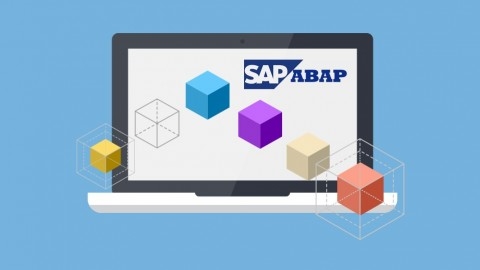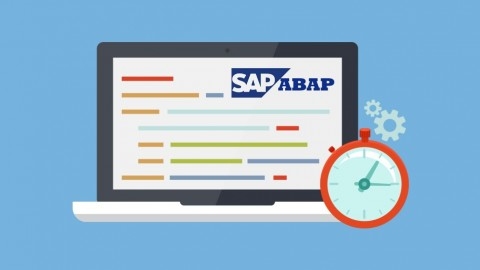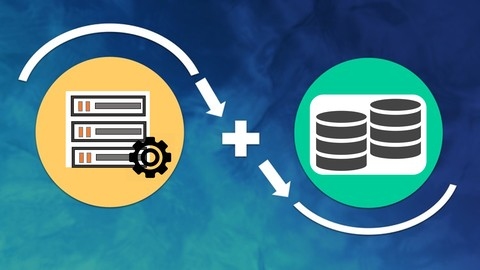SAP ABAP is a powerful programming language specifically designed for SAP systems, which are used by thousands of businesses worldwide.
Learning SAP ABAP can open doors to exciting career opportunities in SAP development, allowing you to customize and extend SAP systems to meet specific business needs.
Mastering this language equips you with the skills to create solutions that improve efficiency, streamline processes, and enhance user experience within SAP environments.
Finding the right SAP ABAP course on Udemy can be a challenge.
You’re looking for a program that is comprehensive, engaging, and taught by experts, but also fits your learning style and goals.
The sheer volume of courses available can make it difficult to choose the best one for you.
We’ve reviewed a wide range of SAP ABAP courses on Udemy and recommend SAP ABAP Programming For Beginners - Online Training as the best course overall.
This course is highly rated and provides a comprehensive introduction to SAP ABAP programming, covering everything from the fundamentals to advanced concepts.
The instructors are experienced SAP professionals and the course features real-world examples and hands-on exercises to reinforce your learning.
While this is our top pick, we have other excellent SAP ABAP courses for you to consider.
Read on for our recommendations for various learning levels, specific focuses like SAP HANA or object-oriented programming, and even tips for preparing for certification exams.
SAP ABAP Programming For Beginners - Online Training
You’ll begin by gaining a solid understanding of SAP’s architecture and its key components, including the ABAP Workbench where you’ll write your code.
You’ll immediately get your hands dirty by creating your first table in the Data Dictionary, a fundamental component of managing data within SAP.
The course then dives into the core of ABAP programming, introducing you to the ABAP editor where you’ll write your first programs.
You’ll learn the essentials of declaring variables and constants, performing calculations, and manipulating character strings.
You’ll also gain valuable experience with debugging tools, essential for identifying and resolving errors in your code.
As you progress, the course delves deeper into working with databases, teaching you how to create and modify tables using SQL statements.
You’ll become familiar with data types like date, time, and quantity, and learn how to utilize them effectively in your calculations.
You’ll also master the creation of selection screens, user-friendly interfaces that allow users to select specific data for viewing or manipulation.
The course builds on these fundamentals by introducing powerful concepts such as program flow control and logical expressions.
You’ll learn to control the flow of your programs using statements like IF, Case, Select, Do, and While.
You’ll also explore modular programming techniques, breaking down complex programs into smaller, reusable components through the use of procedures, subroutines, and function modules.
The course’s emphasis on hands-on learning and practical examples ensures you gain the skills necessary to confidently apply your knowledge in real-world scenarios.
Learn SAP ABAP Objects - Online Training Course
You’ll begin by revisiting the essential foundations of ABAP, including the 3-Tier architecture, system landscapes, data types, and variables.
This groundwork is crucial for success in the world of ABAP Objects.
You’ll then embark on a journey into the heart of ABAP Objects, starting with the fundamental concepts of classes, attributes, methods, and functional methods.
The course guides you through defining, implementing, and coding your first ABAP Objects classes and methods, building your confidence along the way.
Practical homework projects challenge you to create a CAR class with its attributes and methods, reinforcing your understanding through hands-on experience.
You’ll also learn how to effectively manage data within ABAP Objects by incorporating the use of internal tables.
As you progress, you’ll delve into advanced ABAP Objects concepts, including inheritance, method redefinition, abstract classes, final classes, and static elements.
The course empowers you to create subclasses, redefine methods, and leverage static constructors within your ABAP Objects programs.
You’ll grasp the powerful concept of polymorphism, enabling you to write flexible and maintainable code.
You’ll also discover the importance of interfaces, a key concept for creating reusable components.
You’ll learn how to define interfaces, implement them in classes, and utilize them effectively in your projects.
Finally, the course wraps up with a thorough discussion of events, covering event handlers, event registration, and the creation of global classes using the Class Builder (Transaction SE24).
This course is an excellent resource for individuals seeking to master the intricacies of ABAP Objects.
The clear explanations, practical exercises, and step-by-step instructions provide a strong foundation for building your proficiency in this powerful object-oriented programming language.
SAP ABAP Training - in Plain English
You’ll start with the basics, like installing the SAP GUI and writing your first “Hello World” program, and gradually build your knowledge through hands-on exercises and practical examples.
You’ll delve into the world of classical reports, learning how to fetch data from SAP tables using SELECT-OPTIONS.
You’ll discover the power of internal tables, a crucial data structure for manipulating and processing information.
The course covers various SELECT-OPTIONS techniques, including how to use WHERE clauses, AND and OR conditions, and BETWEEN operators.
You’ll learn to use the INSERT, APPEND, and MODIFY statements for efficient data manipulation within internal tables.
The course moves on to interactive reports, showing you how to create user-friendly interfaces for data presentation.
You’ll explore PF Status to control screen layout and functionality.
You’ll also gain proficiency in ALV Grid Reports, which provide a powerful and customizable way to display data in tabular format.
Finally, you’ll be introduced to the world of Open SQL, a structured query language for efficient database interaction.
You’ll learn to create database tables, insert and delete data, and manage transactions using Open SQL.
This course provides a good balance of theoretical concepts and practical applications, making it a valuable starting point for those interested in learning SAP ABAP programming.
SAP ABAP on HANA Training for Beginners
You’ll start by learning the fundamental technical concepts behind SAP HANA, such as in-memory databases, multi-core architecture, and data compression.
This lays the groundwork for understanding the paradigm shift in programming approach required for HANA.
Next, you’ll dive into the ABAP Development Tool (ADT) and learn how to install and use this essential IDE.
Core Data Services (CDS) views are a central focus, covering everything from the basics of CDS syntax to more advanced topics like annotations, case expressions, joins, unions, and authorization.
You’ll learn how to consume CDS views in ABAP reports and even create your own CDS view entities.
The course also covers ABAP Managed Database Procedures (AMDPs), CDS table functions, and using select-options with AMDPs and CDS views.
For data connectivity, you’ll explore ABAP Database Connectivity (ADBC).
The ALV IDA (ABAP List Viewer) section teaches you to display data from tables and CDS views with selection options.
The ABAP programming model for SAP Fiori is covered in depth, including creating virtual data models, basic views, composite views, and consumption views for OData services.
You’ll even build a Fiori list report application using CDS views.
The course culminates with the ABAP RESTful Application Programming Model (RAP), providing an architectural overview and guiding you through building Fiori apps using RAP on the Business Technology Platform (BTP).
Bonus lectures walk you through setting up a trial ABAP system with a HANA database on SAP Cloud Platform, complete with sample code to practice.
You’ll also get an introduction to other relevant courses like mastering the new ABAP syntax and preparing for certification exams.
SAP ABAP Core Data Services ( CDS Views ) for S/4 HANA
The course starts by introducing you to the ABAP Development Toolset (ADT) and guiding you through its installation process, including setting up Eclipse.
You’ll then dive into modeling your first CDS view, learning the syntax and data model.
Through demos, you’ll create and edit CDS views while exploring useful editor tools.
The course covers essential CDS data modeling concepts like CASE statements, CAST operations, numeric functions, arithmetic expressions, and string functions.
You’ll also learn how to effectively use annotations in CDS views.
Moving forward, you’ll gain a solid understanding of CDS joins and associations, including unions and the differences between joins and associations.
The course delves into advanced data modeling concepts like session variables, currency and quantity conversion (with a dedicated demo), client handling, aggregate expressions, and the GROUP BY + HAVING clause.
Access control is a crucial topic covered in-depth, including its concepts, patterns, and the access control simulator.
You’ll also explore the virtual data model (VDM) and best practices for naming conventions for views and fields, with demos on creating composite and consumption views.
To put your knowledge into practice, you’ll learn how to create a smart template-based UI5 application.
You’ll create an OData service using a consumption view, add CDS view annotations for list and object pages, and display PO items and data on the respective pages.
The course also covers extending ABAP CDS views and ABAP Managed Database Procedures (AMDPs), both theoretically and through practical demos.
Learn SAP ABAP by Doing
You’ll start by exploring the building blocks of ABAP programming, delving into data types, data objects like structures and internal tables, and understanding how to define and manipulate them within your code.
One of the strengths of this course lies in its emphasis on debugging.
You’ll learn to use the powerful debugger to analyze and modify data objects within your ABAP programs, a crucial skill for identifying and resolving issues.
You’ll master the art of setting breakpoints and watchpoints, essential tools for pinpointing errors and understanding your code’s behavior.
Moving beyond the fundamentals, you’ll delve into the SAP Data Dictionary, the heart of SAP data management.
You’ll gain a thorough understanding of data elements, domains, and structures, learning how these components work together to ensure data integrity and consistency within your applications.
The course also equips you with the ability to build modular and reusable code through subroutines and function modules.
You’ll learn how to pass parameters effectively, making your code more adaptable and reducing redundancy.
You’ll gain hands-on experience with database access, mastering the techniques for retrieving, inserting, updating, and deleting data within SAP tables.
This knowledge is essential for any ABAP developer, allowing you to interact with the core of SAP data.
Finally, the course explores screen programming using Module Pool Programming, empowering you to create custom user interfaces.
You’ll learn how to define input and output fields, implement screen validation techniques, and control the flow of your screens.
You’ll also gain expertise in utilizing table controls for displaying and manipulating data efficiently on the screen, further enhancing the user experience.
SAP ABAP New Language Features - Learn ABAP 7.4 & 7.5 syntax
This course is a valuable resource for anyone looking to upgrade their ABAP skills with the latest features introduced in versions 7.4 and 7.5.
You’ll learn to write more efficient and modern code by mastering powerful new syntax and techniques.
The course begins with a thorough examination of inline declarations, a key feature of modern ABAP.
You’ll learn how to declare variables and work areas directly within loops, making your code cleaner and easier to read.
You’ll also become proficient with field symbols, which offer a flexible way to reference data structures.
The syllabus then dives into the new string processing methods.
You’ll learn how to use string templates to create dynamic strings, master the ALPHA formatting for string transformations, and understand the CAST operator for data type conversion.
You’ll also explore the power of the FOR and REDUCE operators, which can significantly streamline your code for looping and data aggregation.
A substantial portion of the course is dedicated to the object-oriented features introduced in ABAP.
You’ll gain hands-on experience with the new instantiation operator for creating objects and master the “Is Instance Of” relational expression for object type checking.
The course also delves into the latest advancements in Open SQL, teaching you how to use Union and Union All for more powerful database queries.
Throughout the course, you’ll work through numerous practical demonstrations, giving you a clear understanding of how these new features work in real-world scenarios.
SAP ABAP : Enhancement & Modification to SAP Standard
You’ll begin by delving into the fundamentals of data dictionary enhancements, learning to modify table structures and data types.
This section is particularly strong in its use of real-world examples, helping you to apply these concepts to practical scenarios.
The hands-on practice sessions, like the one on Table Enhancement, allow you to immediately put your knowledge into action.
Moving beyond data dictionary enhancements, the course explores the powerful world of Customer Exits.
You’ll discover how to leverage these exit points to modify SAP functionality in various ways, including function module exits, menu exits, and screen exits.
Each type of exit is explained clearly, and the course provides a thorough exploration of the potential use cases.
For instance, you’ll learn to implement a function module exit to customize a specific business process or to modify the behavior of a screen exit to enhance user interactions.
Next, you’ll delve into Business Transaction Events (BTEs), a key component of SAP customization.
The course does an excellent job of explaining the complex workings of the process and publish & subscribe interfaces.
You’ll learn to implement BTEs in various scenarios, even exploring how they function within FI reports.
This depth of coverage ensures you understand the full potential of BTEs for modifying SAP applications.
Finally, the course delves into Business Add-Ins (BADIs), a powerful tool for extending SAP functionality.
You’ll learn to write BADI logic, create custom screens, and gain a comprehensive understanding of how BADIs differ from function modules and function module exits.
This section offers a valuable exploration of how BADIs enable you to effectively modify SAP at a deeper level.
While the course provides a strong foundation in ABAP enhancements and modifications, it might benefit from more advanced content on complex scenarios and debugging techniques.
However, for those seeking a thorough introduction to customizing SAP applications, this course is a valuable resource.
SAP S/4HANA - Learn ABAP Programming model for SAP S/4 HANA
You will start by learning how to install the ABAP Development Tools (ADT) and create various artifacts like domains, data elements, structures, and classes in HANA Studio.
The course covers helpful functions in HANA Studio to enhance your productivity.
Moving on, you will dive into ABAP Core Data Services (CDS), a key component of the ABAP programming model.
You will learn how to define CDS views, create associations, use CASE and CAST statements, and leverage SQL functions.
The course also covers important concepts like client handling, currency conversion, and aggregate functions with GROUP BY and HAVING clauses.
Additionally, you will explore annotations, which play a crucial role in enhancing the functionality of CDS views.
The course then introduces you to OData, a standardized protocol for building RESTful APIs.
You will learn about CRUD (Create, Read, Update, Delete) and query operations in OData.
Hands-on exercises will guide you through creating an SAP Gateway project, defining entity types and sets, generating runtime artifacts, and implementing GET, POST, and ORDER BY operations.
Testing these operations using the Gateway client will reinforce your understanding.
Another key topic covered is the Business Object Processing Framework (BOPF), which simplifies the development of business applications in SAP S/4HANA.
You will learn about the BOPF meta-model and create an end-to-end S/4HANA application from scratch.
This includes creating base tables, interface and transaction processing CDS views, testing the BOPF object, creating consumption CDS views, activating the OData service, and testing it in the Gateway client.
Finally, you will build a user interface using a Smart Template based on UI5.
Throughout the course, you will gain practical experience by working on hands-on exercises and demos, ensuring a solid understanding of the concepts covered.
SAP OOPS ABAP ( With complete Material/Documentation )
You’ll begin by exploring the core concepts of OOP, including classes, attributes, methods, and the distinction between instance and static methods.
You’ll learn how to define and utilize constructors, work with global classes, convert local classes to global classes, and effectively handle parameters in global classes.
The course dives into the intricacies of internal tables in classes, including how to utilize them within the OOP framework.
Moving beyond the basics, you’ll gain a deep understanding of inheritance in ABAP, exploring both global and local inheritance scenarios.
You’ll learn how to effectively work with abstract classes, interfaces, and the implementation of interfaces, both fully and partially.
You’ll master the handling of standard and custom exceptions through the Runtime Type Services (RTTS) and Object Type Repository (OTR), ensuring robust and error-free code.
The course then transitions into the realm of user interface development using the Advanced List Viewer (ALV).
You’ll learn how to utilize the SALV framework to create interactive ALV displays, including the integration of hotspots, event registers, handlers, and other powerful features.
You’ll also explore the integration of picture controls, tree controls, and splitter controls, enhancing your ability to design engaging and user-friendly interfaces.
Finally, you’ll gain expertise in building hierarchical sequential reports using the ALV object model, enabling you to customize your ALV displays with cell coloring, traffic light columns, and dropdown columns.
You’ll acquire practical skills, gain valuable insights, and leave with the confidence to confidently tackle complex ABAP projects.










